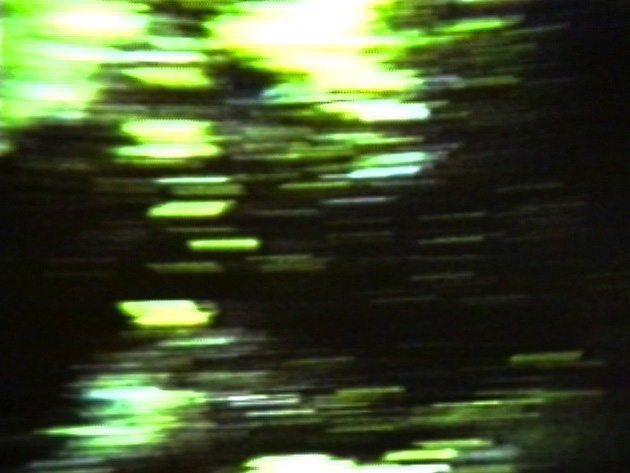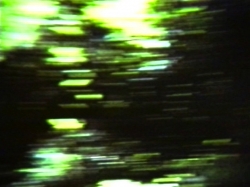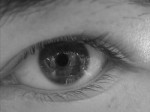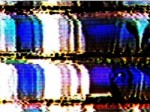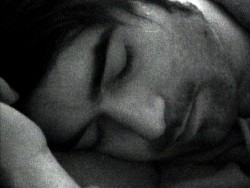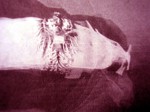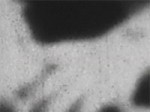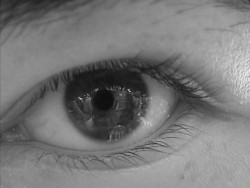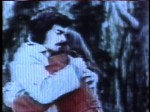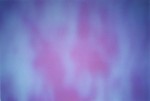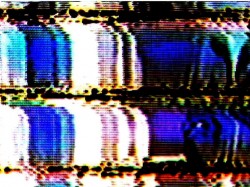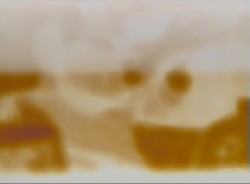
Der Morgen. Im gleißend weißen Rechteck fängt er an. Durchs Weiß flackern farbige Streifen. Quer durchs Bild gezogen, wandern die Linien vertikal auf und ab. Mal schneller, mal langsam. Zucken und hüpfen. Brodeln am Horizont. Prallen aufeinander und voneinander weg. Das Flackern generiert Nachbilder, Fata Morganen – sind das zwei, drei oder doch nur eine Horizontale, die sich da bewegen. Oder vibriert längst das Auge, hat zu lange ins Licht geschaut?
Le matin, das Video von Paul Divjak zu Bernhard Fleischmanns gleichnamigem Track, ist ein Spiel mit der Wahrnehmung und ein Lichtspiel. Warmes Licht. Gelb- und Orangetöne glosen wie Feuerlinien, lösen sich in fette Punkte auf. Rinnen ins Schwarz. Wie die Musik (die die Bilder dynamisiert – ohne Ton wirken sie ruhiger und weicher) vermitteln sie vor allem eine Stimmung, der der Titel einen (möglichen) Namen gibt: Der Morgen. Die Musik drängt vorwärts, während das Bild verrutscht und verwackelt. Noch nicht ganz da und schon wieder weiter. Eigentlich ist le matin von Hand gemacht. Ein manueller Bildsuchlauf durch die TV-Kanäle, die Musik im Ohr. Mit einer Videokamera aufgezeichnet, digital montiert und leicht nachbearbeitet. Manchmal formieren sich solcher Art kurz zarte Schemen: ein Gesicht, ein Fenster, jemand, der aus einem Zimmer geht. Aber sie verfestigen sich nicht, kommen nicht zu sich, sind trotzdem präsent. Wie Traumbilder, denen man nachhaengt, wenn man aufwacht am Morgen.
[Isabella Reicher]
Morning. He begins in the glaring white square. Colored lines flicker across the white field. As they cross the picture, these lines shift in a vertical direction, sometimes quickly and sometimes rather slowly. Jerks and convulsions. Seething on the horizon. They collide and skitter apart. The flickering leaves after-images, mirages-are there two or three horizontal lines, or only one? Or have the eyes begun jiggling from staring at the light? le matin, Paul Divjak’s video to the song of the same name by Bernhard Fleischmann, plays with perception and light. Warm light. Shades of yellow and orange glow like strips of fire, and then break up into fat points. Fade into black. Similarly to the music (which is dynamized by the images; without the soundtrack, they seem softer and more peaceful), they produce an atmosphere which suggests a (possible) name for the song, that of morning. The music pushes onward while the picture slips and wobbles. Carrying on before it even arrives. In fact, le matin is hand-made. A manual search through the TV channels to the music. Filmed with a video camera, digitally edited and then slightly altered altered. At times, fragile and short-lived patterns can form in this way: a face, a window, a figure leaving a room. But though they never coalesce, never develop a final form, they have a presence. Like images from a dream one cannot forget after waking up the next morning. [Isabella Reicher]
